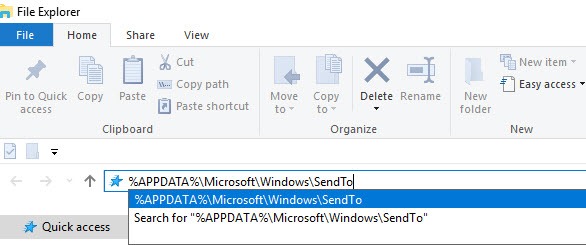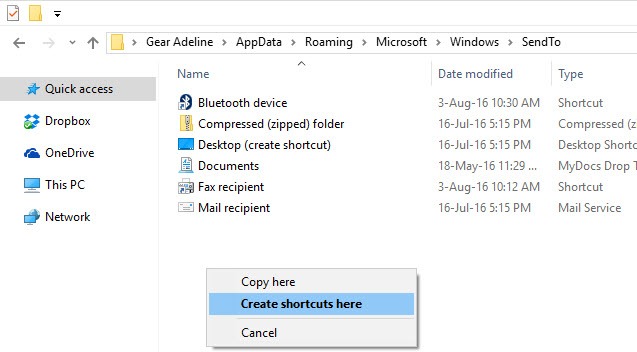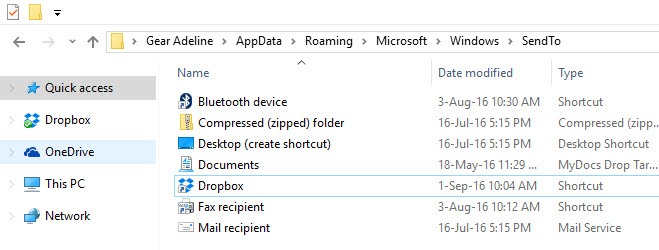In this tutorial, we show you how to add Dropbox to the send to menu in Windows 10 so you can quickly move files to the folder.
The Quick Access section in File Explorer is helpful to navigate to folders you often use. But if you find it easier to access folders via the right-click context menu, who can blame you! One option that I often use to move files to my cloud storage solutions is the right-click Send To menu.
In a previous post, I showed you how to add Google Drive and other cloud solutions to the Send to menu in Windows 8. Today, I’ll show you how to add Dropbox to the Send to menu in Windows 10. You can follow the same process for adding other cloud solutions like Google Drive, OneDrive, or iCloud Drive to this menu as well.
How to Add Dropbox to the Send to Menu in Windows 10
1. Open File Explorer and in the address bar, type %APPDATA%\Microsoft\Windows\SendTo
2. Press Enter to display the SendTo folder in Windows.

3. In the left pane of File Explorer, you will see a Dropbox folder icon. If you don’t see it, you’ll need to install the Dropbox desktop client on your PC. If you want to add Google Drive or iCloud Drive, you must install the respective desktop clients for those solutions.
4. On the left pane of File Explorer, right-click the Dropbox folder icon and drag it to the SendTo folder.

5. When you release the mouse, you’ll see a pop up menu with 3 options: Copy here, Create shortcuts here, and Cancel. We want to create a shortcut, so select Create shortcuts here.

6. An item called Dropbox – Shortcut is added to the Sendto folder. You can retain the name as is or remove the appendage. To remove the extras, select the shortcut file, press F2, and remove Shortcut. Press Enter to complete the name change.

That’s it! You just added the shortcut to Dropbox to the Send Menu. Now, when you right-click on a file or folder, you’ll have the option to send it directly to your Dropbox, Google Drive, OneDrive, or iCloud Drive. You can follow the same process to add Google Drive, OneDrive, and iCloud Drive to the SendTo menu folder, just with the respective app icons.
Leave a Reply